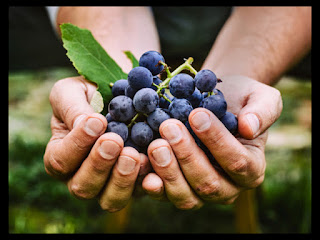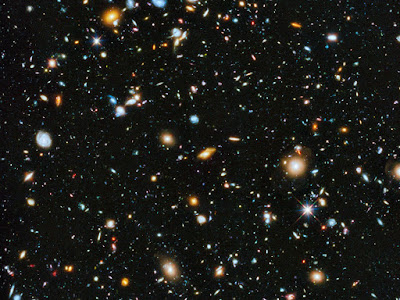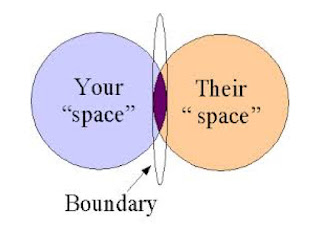Abiding in Unconditional Love:
a reflection on UNDRIP
(United Nations Declaration on the Rights of Indigenous Peoples)
 |
| Click UNDRIP handbook |
John 15:1-8
My family’s first home in Canada was in Burnaby, a suburb of Vancouver. We had just arrived, and we had no car, just a stroller for our 8-month-old, Peace. At that time, I don’t remember my family ever walking on Burnaby Mountain. We lived in Burnaby for the first year, then we lived in Vancouver for the next three years. We moved again to Vancouver Island for the next four years, until we finally settled in Winnipeg. We’ve moved from place to place, yet still, the name, ‘Burnaby’ sounds like home. Whenever we hear the news about what’s happening in Burnaby, my memories move me into listening with more affection, more concern, more interest, because it was our first home here.
Newcomers and new immigrants develop their sense of home in their new country: their affection for the places, their sense of belonging to the community.
Back then, I didn’t have the awareness that this place where we lived and grew our family was on Tsleil-Waututh territory, on which the coastal First Nations have raised a totem pole, a “warrior”, overlooking Burrard Inlet toward Kinder Morgan’s Westridge Terminal in Burnaby. The totem pole enshrines a commandment to the community to “warrior up” against Kinder Morgan.
When I had a personal meeting with Stan McKay, I asked the question I had carried with me for a long time about what, as a newcomer, my responsibility and participation could be in solidarity with Indigenous communities and individual relatives. I appreciated Stan’s answers. “Are the settlers all the same? No. The indigenous are all the same? No.” We need to recognize diversity in the settlers as well as diversity in the indigenous community. Both settlers and indigenous, the diverse people in both communities see that the land is a gift. Immigrants and new Canadians are a gift too, yet we should know that a gift comes with a responsibility. Success continues to be measured by societal norms, still deeply imbedded in the doctrine of discovery, which is aggressive survival on the land. Intercultural communities of faith need to learn that we have this piece of the same struggle, understanding diversity as gift. Collaboration is possible. Stan continued, “In this part of the city, when new Canadians come, we, the indigenous community wish education: how the newcomers are prepared to encounter indigenous people and our issues."
The arrival of new Canadians is not itself problematic. The lack of education on racism is a problem. The lack of it complicates all of our intercultural relations. At the entry into Canada or at the citizenship ceremony, the final recommendation of the Truth and Reconciliation Commission, 94, calls for acknowledging Treaty.
94. We call upon the Government of Canada to replace the Oath of Citizenship with the following:
I swear (or affirm) that I will be faithful and bear true allegiance to Her Majesty Queen Elizabeth the second, Queen of Canada. Her Heirs and Successors, and that I will faithfully observe the laws of Canada, including Treaties with Indigenous peoples, and fulfill my duties as a Canadian citizen.
“It’s a request. We are not there yet”, Stan concluded.
A few months ago, the Prime Minister visited Winnipeg and met with whoever wanted to participate in a Town Hall-style meeting with him at the University of Manitoba. I was impressed with his compassion, keen sense of justice, and the way he applied his listening skills to a lot of people anxious to talk to him, until a moment when a man behind him began to shout to get the Prime Minister’s attention. It was understandable that otherwise he might not get a hearing. Before him, many did the same to talk to the Prime Minister. The issue this man wanted urgent attention for was about the Kinder Morgan Pipeline, but the Prime Minister (in contrast to the warmth and compassion he showed to the other justice issues) brushed him off quickly and coldly and said “No.” “We need to think of all in Canada.” which made me question, immediately, “Who are all?” Obviously and at the same time implicitly, the Prime Minister conveyed the clear message or impression to me (There were a lot of new Canadians in the meeting room. He looked at them and said, “all”.) that the ‘all’ include new Canadians and are the new Canadians who have come to this land seeking hope and success, AS IF our hope is a single goal - economic and political stability and success. As if we are unable to dream bigger than just the economic prosperity of this country. As if we are potentially unwilling to join in the historical task of our work towards reconciliation, just because we are new Canadians. (Remember, many newcomers know what it means to have their land and identity taken away through their own country’s painful history of being colonized and politically oppressed.)
Reconciliation is our call and task as a church. Immanuel started our response to this calling years ago. As I shared last week, this is a way for us to live the Christian call to be a “boundary-dweller” because we will continue to open ourselves to deeper learning and stronger relationship with the indigenous community and their members until no one is the Other and no place is the margin.
TRC Call to Action 48
“We call upon the church parties to the Settlement Agreement, and all other faith groups and interfaith social justice groups in Canada who have not already done so to formally adopt and comply with the principles, norms, and standards of the United Nations Declaration on the Rights of Indigenous Peoples” as a framework for reconciliation. One of the examples is ensuring that their institutions, policies, programs, and practices comply with the UNDRIP.
What is the UN Declaration on the Rights of Indigenous Peoples? There are some misunderstandings and negativity surrounding this affirmation. The BC provincial government warns that "It could put jobs and the economy at risk, because the declaration requires states to obtain from indigenous people 'their free, prior and informed consent before adopting and implementing legislative or administrative measures that may affect them.'” The B.C. Premier said there are, “Really problematic… clauses that would seem to suggest that First Nations could have an absolute veto over resource development on any of their territories.” These are misunderstandings. They are not true (for example, there is no mention of “veto” in the document.)
UNDRIP is a document which affirms six key principles:
the right to self-determination,
the right to participate in decision-making
the right to cultural and spiritual identity
the right to lands and resources
the right to free, prior, and informed consent
the right to be free from discrimination.
When we claim that we are “neutral” and say that we wish to see the situation from a bias-free point of view — then we’ve already started casting aspersions on UNDRIP. Our former government characterized it as an “aspirational document” (2010, Canada), before then, opposed it. (2007.)
Recently, we’ve received a large-size poster of the document to display in our sanctuary. We also have many copies of it in the form of a small booklet. You are very welcome and encouraged to pick one up and take it home. I hope that the inclusion of this work in our daily life and our church’s community life will help us to make better solidarity with the indigenous members in our church, our neighbourhood and community, and with the Coast Salish people who urgently call for our support and solidarity.
Burnaby is my home. Vancouver is my home. Chemainus is my home. Winnipeg is my home. Reconciliation is our “home” work, the home work of all of us.
In today’s reading, we are reminded of God’s unconditional love. We are called to “Abide in love” (John 15), and this love is unconditional love. What the church offers should be unconditional love. In reality, what the church offers is (sadly, very often) conditional love to minority people. “Conditions.” What are the conditions? To fit in, to conform, to not be different. “Do not rock the boat.” When we welcome people to us, what churches, (We, United Churches too, the traditional, mainline Canadian church!) often ask, in many small details, of those we welcome is… “proximity” to whiteness or white middle-class styles and views. Without keeping this awareness in mind, we tend to do it — the asking —, even though our best intention is to genuinely welcome them and love them in Christ. It is truly sad, if we give these conditions to those whom we welcome — not to be different. To be like us.
I hope that our small action of displaying UNDRIP in our view, in our sanctuary, may encourage us to study and to remember that Jesus’ love is unconditional love; we must strive to become an intercultural church inspired by these affirmations on the rights of indigenous peoples. We may not be able to be perfect in unconditional love all the time. In fact, we will always fall short of being perfect. Yet, I hope, with our Council elders at Immanuel, that we will always try hard to get closer to what we are called to do and be — abiding in love. Abiding in God’s unconditional love.
Amen.


























%5EJ%202023.jpg)
